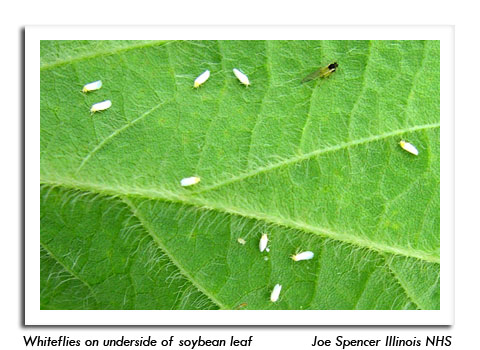
 |
|
|
Soybeans
Volume 59 Number 14 Date 08/07/2014 SOYBEAN APHID - Observations from annual aphid survey currently under way suggest populations are still low in the vast majority of Wisconsin soybean fields, but may be increasing in response to mild late-summer temperatures. Three of the 188 fields sampled as of August 6, one each in La Crosse, Waupaca and Wood counties, had moderate average counts greater than 40 aphids per plant on 100% of the plants, with individual plant counts of 105-255 aphids per plant. Soybean aphids reproduce faster under cooler conditions, with the greatest population growth occurring at temperatures of 70-80°F. Insecticide treatment, if required, is most effective when applied during the R2-R4 (full bloom to full pod) stages. JAPANESE BEETLE - Light to moderate (2-15%) defoliation is common in soybeans statewide. Populations appear to be down from last year in most locations and treatment has not been justified for any field sampled so far this season. The economic threshold for Japanese beetle and other leaf feeding soybean pests is 20% defoliation between bloom and pod fill. WHITEFLY - Minor infestations were observed this week in soybeans in the west-central and southwest counties. Whiteflies are a common pest of greenhouse plants and commercial vegetables with high reproductive potential and known resistance to several insecticides. Their sporadic appearance in Wisconsin soybeans is primarily a curiosity since yield reductions have never been documented in Midwestern soybeans. -- Krista Hamilton, DATCP Entomologist 


|
|
|